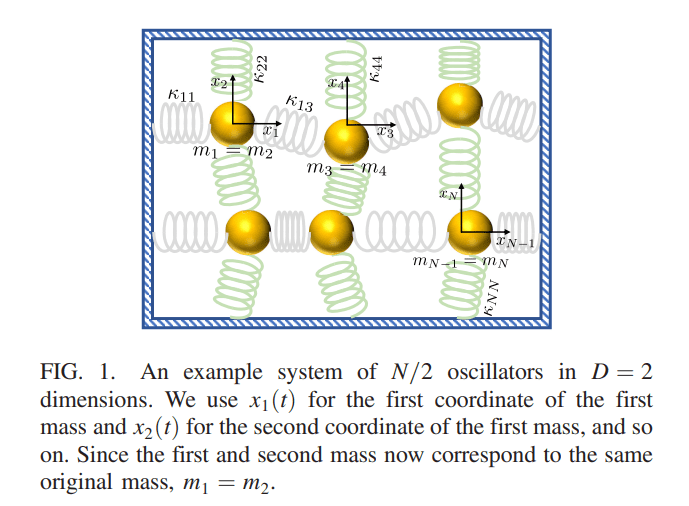TL;DR:
- Quantum computing holds the potential to solve problems exponentially faster than classical computers.
- Classical mechanics faces computational hurdles, especially in simulating coupled harmonic oscillators.
- Researchers have developed a mapping technique that encodes oscillator information into qubits, reducing resource requirements.
- Quantum algorithms can efficiently solve problems by transforming them into coupled oscillator networks.
- This breakthrough offers new possibilities for quantum computing and algorithm development.
- It demonstrates the capability of quantum algorithms to tackle computationally challenging problems.
Main AI News:
The realm of classical mechanics has long grappled with the intricate motions of objects, the forces that govern them, and the energy underpinning their actions. In stark contrast, quantum mechanics stands as a foundational pillar of physics, unraveling the enigmatic behaviors of matter and energy at the atomic and subatomic levels.
Quantum computing, a burgeoning frontier, holds the promise of revolutionizing problem-solving by outpacing classical computers exponentially. Notable instances of this seismic acceleration include Shor’s pioneering factoring algorithm and the realm of quantum simulation.
Classical mechanics, however, finds itself ensnared by computational barriers, most conspicuously in the domain of simulating coupled harmonic oscillators. A prime exemplar of such oscillators arises in systems of masses interconnected by springs, where the displacement of one constituent sets off a cascade of oscillations reverberating throughout the assembly. As the roster of masses swells, so does the intricacy entwined with simulating this intricate web of interrelated movements. This enduring challenge has cast a shadow over classical mechanics simulations, impeding progress for an extensive duration.
In response, researchers have meticulously crafted a novel mapping technique, one that ingeniously encodes the positional coordinates and velocities of all masses and springs within the quantum wavefunction of a qubit-based system. By capitalizing on the exponential proliferation of parameters inherent to quantum systems as qubit numbers surge, the researchers have unveiled a revelation—only an approximate logarithmic quotient of qubits, roughly log(N), is requisite to efficiently encode the informational essence of N masses. This phenomenon crystallizes because the parameters governing the wavefunction of a qubit-based system burgeon exponentially in tandem with the number of qubits at play.
This astute exploitation of exponential parameter growth affords the evolution of the wavefunction the ability to deduce the trajectories of spheres and springs at a subsequent juncture, an endeavor that mandates substantially fewer resources in comparison to a rudimentary classical approach to simulating such intricate systems.
In an astonishing twist, the researchers have demonstrated that any problem that quantum algorithms adeptly resolve can be artfully transmuted into a conundrum involving an interconnected network of coupled oscillators. This groundbreaking revelation not only unfurls new vistas for the deployment of quantum computers but also ushers in a fresh paradigm for the development of quantum algorithms, whereby insights from classical systems engender transformative breakthroughs.
The researchers, in their resounding declaration, underscore that beyond substantiating the equivalence of classical and quantum dynamics, their work lays the groundwork for the cultivation of additional quantum algorithms with exponential accelerations. This illuminates the revolutionary prowess of the novel quantum algorithm in navigating computationally taxing conundrums. The implications are profound; by discerning the propagation of classical waves within the quantum milieu, scientists are poised to unravel unprecedented avenues for the efficacious resolution of formidable quandaries.
Conclusion:
This groundbreaking quantum algorithm for efficient coupled oscillator simulation signifies a pivotal advancement in the field of quantum computing. It opens up new horizons for problem-solving and algorithm development, potentially revolutionizing industries and applications that rely on complex simulations and computations. Businesses and researchers should closely monitor these developments and consider how quantum computing can be harnessed to gain a competitive edge in their respective fields.

